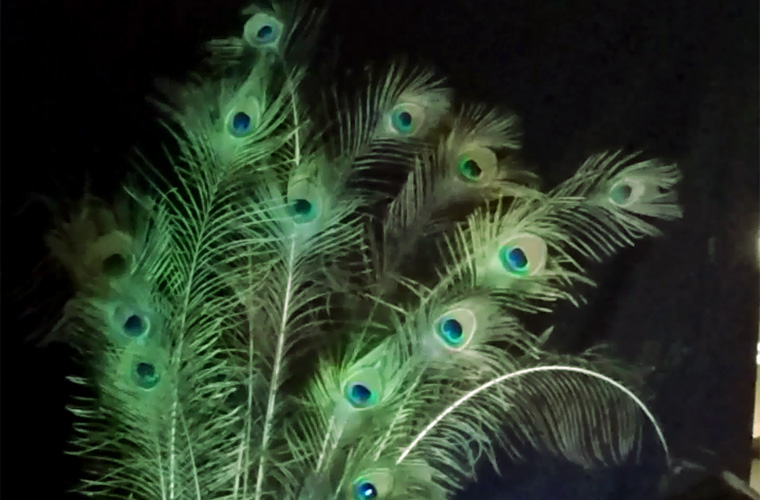Main Menu
- Home
- Product Finder
- Calibration Systems
- Calibration Services
- Digital Sensing
- Industrial Vibration Calibration
- Modal and Vibration Testing
- Non-Destructive Testing
- Sound & Vibration Rental Program
- Learn
- About Us
- Contact Us
 When Dr. Suzanne Amador Kane, Professor of Physics and Astronomy at Haverford College, was looking for a way to mimic the low-frequency vibration of peacock mating displays in her physics lab, she needed a mechanical shaker that could stand up to the job.
When Dr. Suzanne Amador Kane, Professor of Physics and Astronomy at Haverford College, was looking for a way to mimic the low-frequency vibration of peacock mating displays in her physics lab, she needed a mechanical shaker that could stand up to the job.
Kane studies mating displays and feather vibration of large birds such as the peacock, peacock pheasant, and great argus pheasant. Males of these species rattle a long train of tail feathers in an effort to attract a mate. Kane needed to shake large, unwieldy assemblies horizontally at relatively low frequencies and high amplitude to mimic the whole body motions of the natural shaking of the animal. She knew that the lightweight mechanical wave driver she had previously used to shake individual feathers couldn’t supply the energy needed for larger assemblies and a “beefier” shaker would be required. Thanks to the SmartShakerTM from The Modal Shop, beefier did not translate to large, unwieldy, and inconvenient.
A number of features made the SmartShaker Model K2007E01 the right tool for Dr. Kane’s lab:
 According to Kane, the shaker is a “one-step solution” and has been a great addition to her lab. Her research into feather vibration is ongoing, and as she studies more species of pheasants, the SmartShaker will play a central role in gathering data.
According to Kane, the shaker is a “one-step solution” and has been a great addition to her lab. Her research into feather vibration is ongoing, and as she studies more species of pheasants, the SmartShaker will play a central role in gathering data.
The SmartShaker is versatile for use in a wide variety of applications. In addition to biophysics and biomechanics applications and animal vibration studies, the team of physicists at Haverford College has plans to use the shaker to model geophysical processes and particle-scale interactions.
To learn more about Dr. Kane’s research, see this article from Discover Magazine or Dr. Kane’s Haverford College homepage.